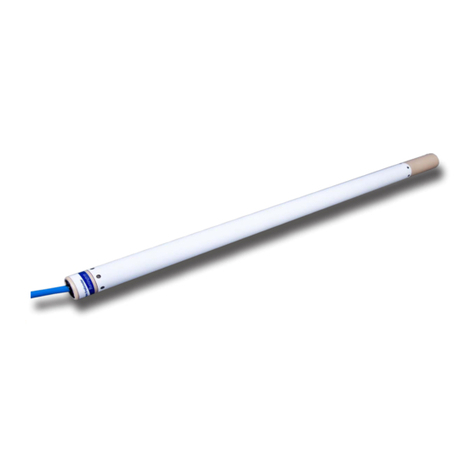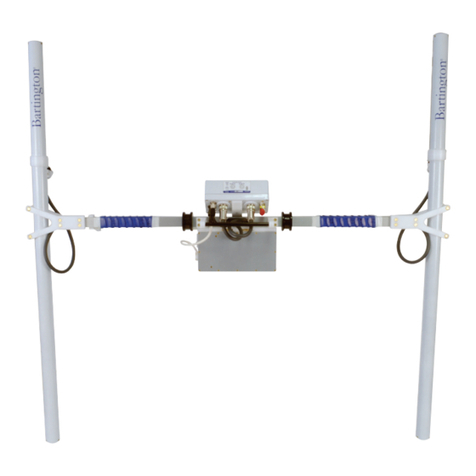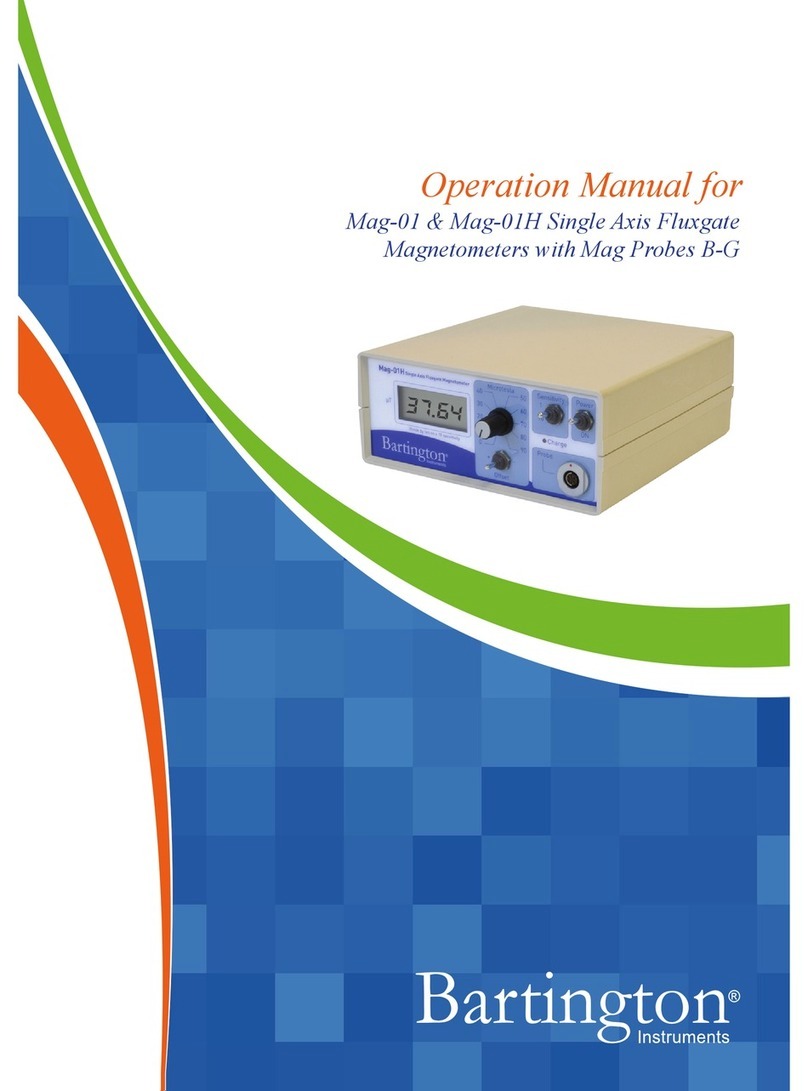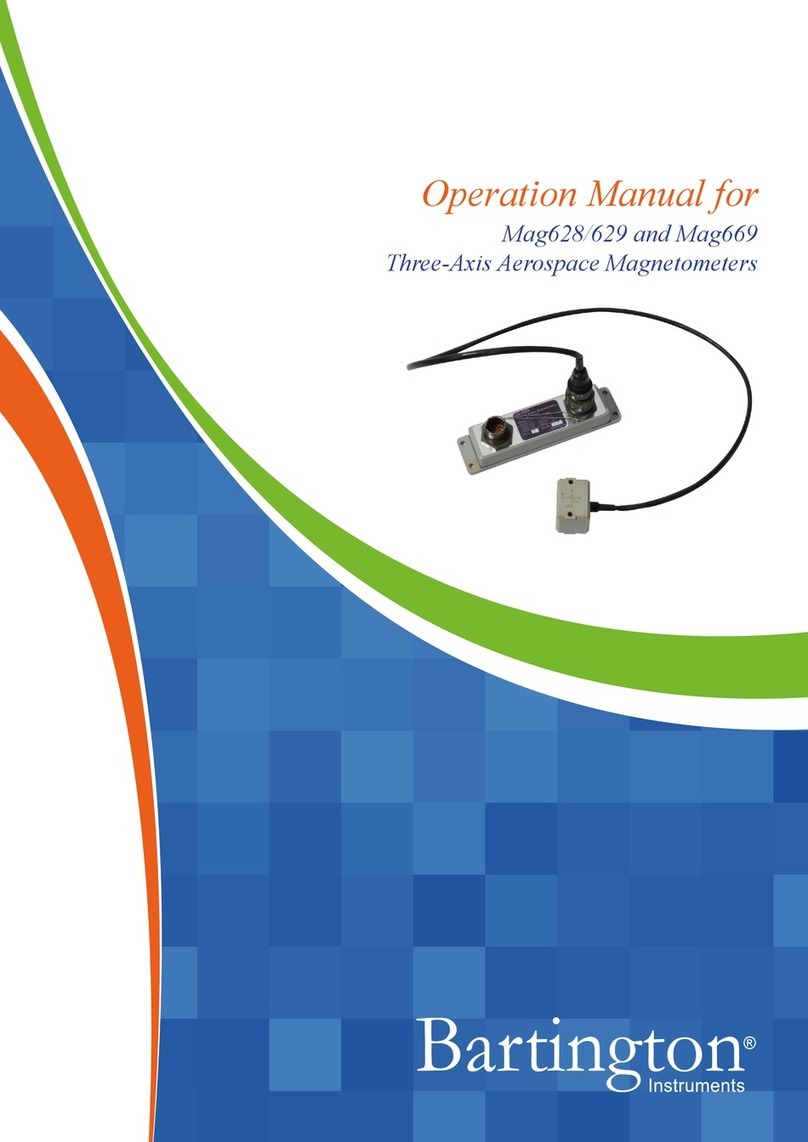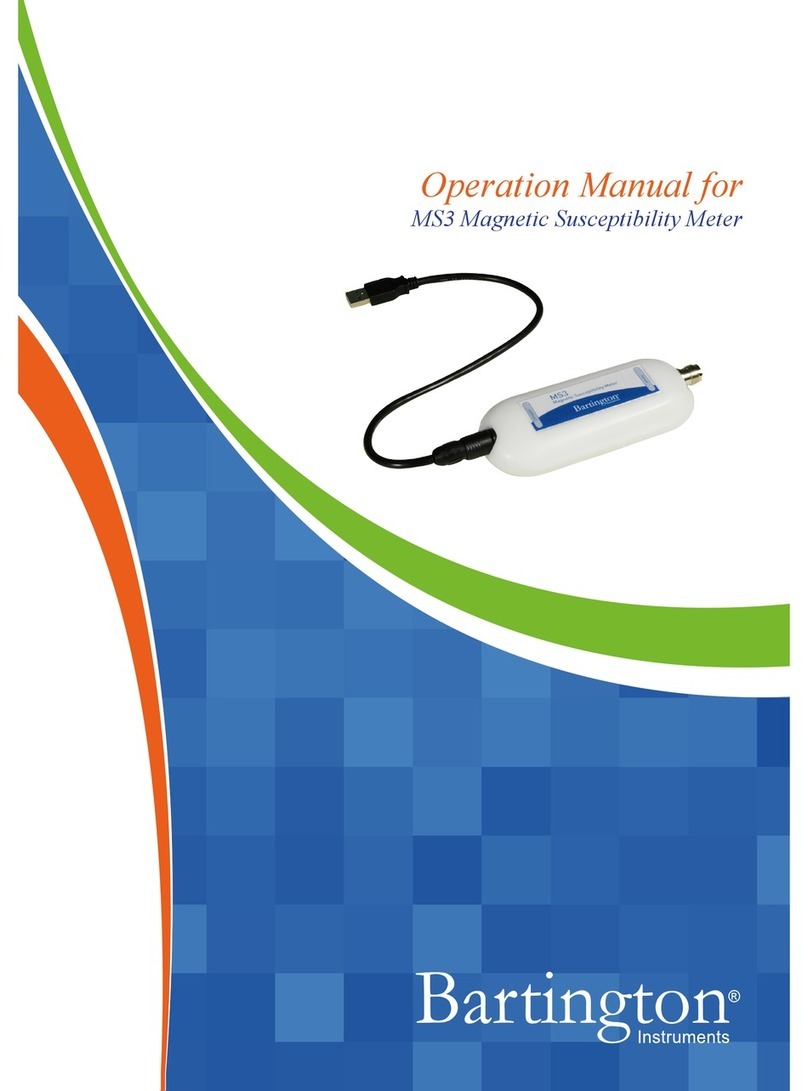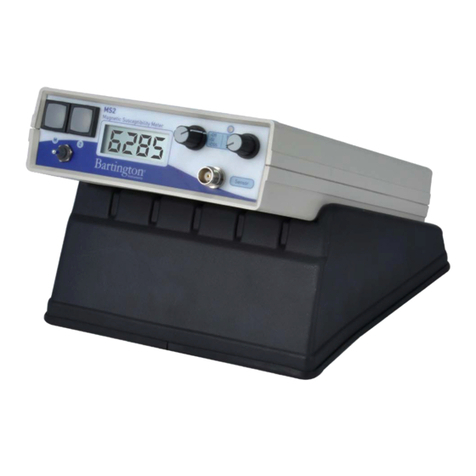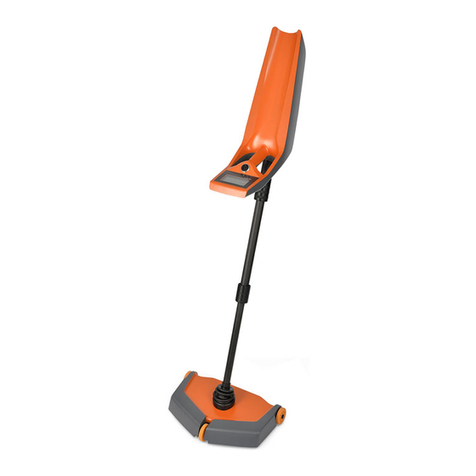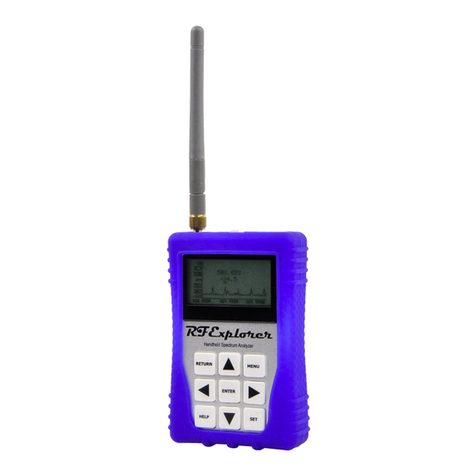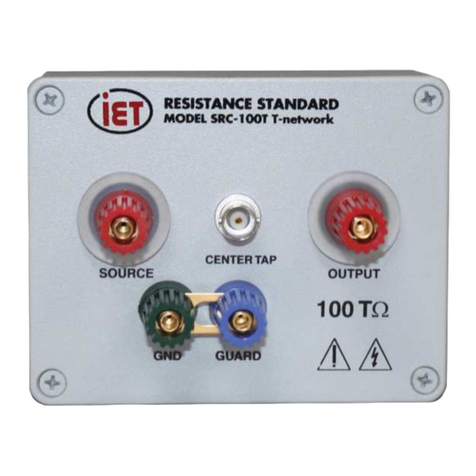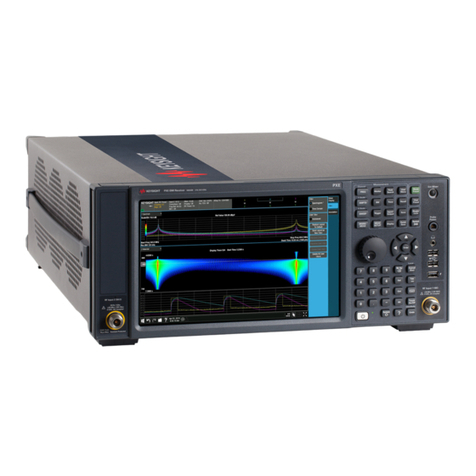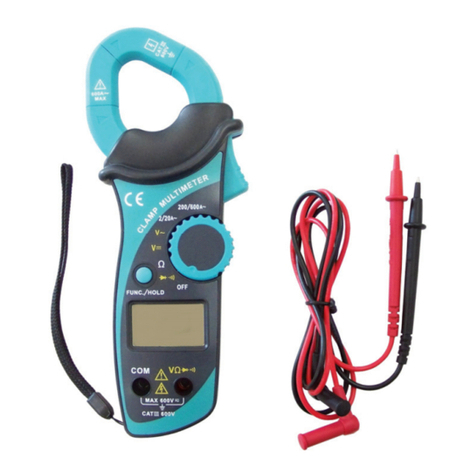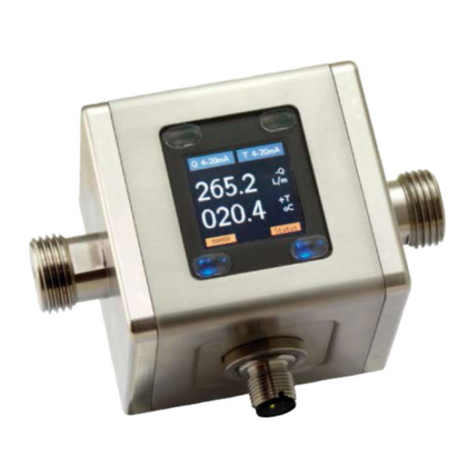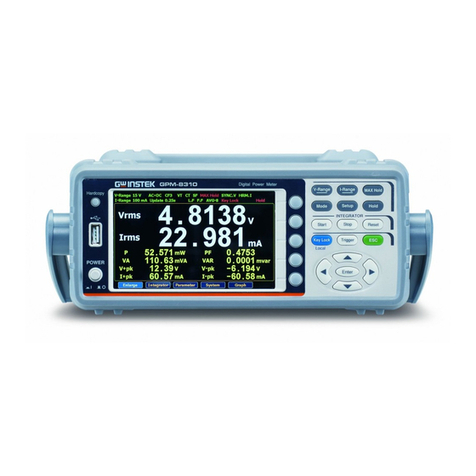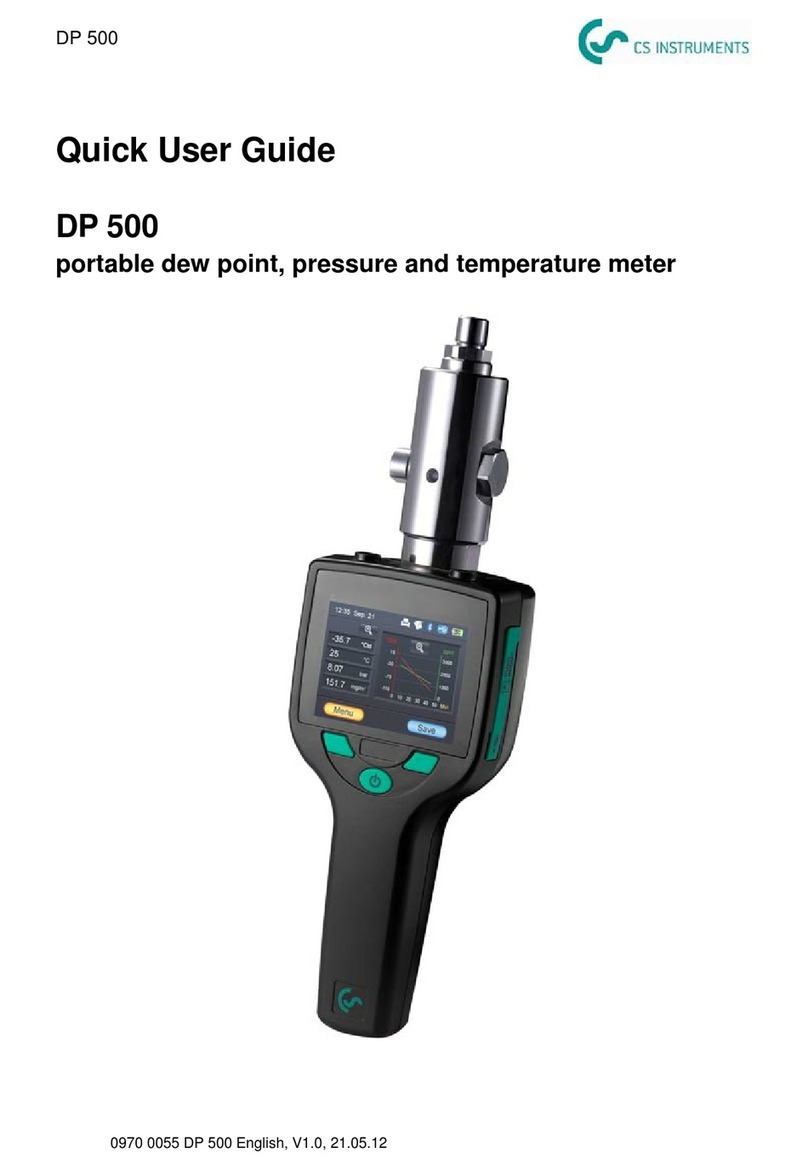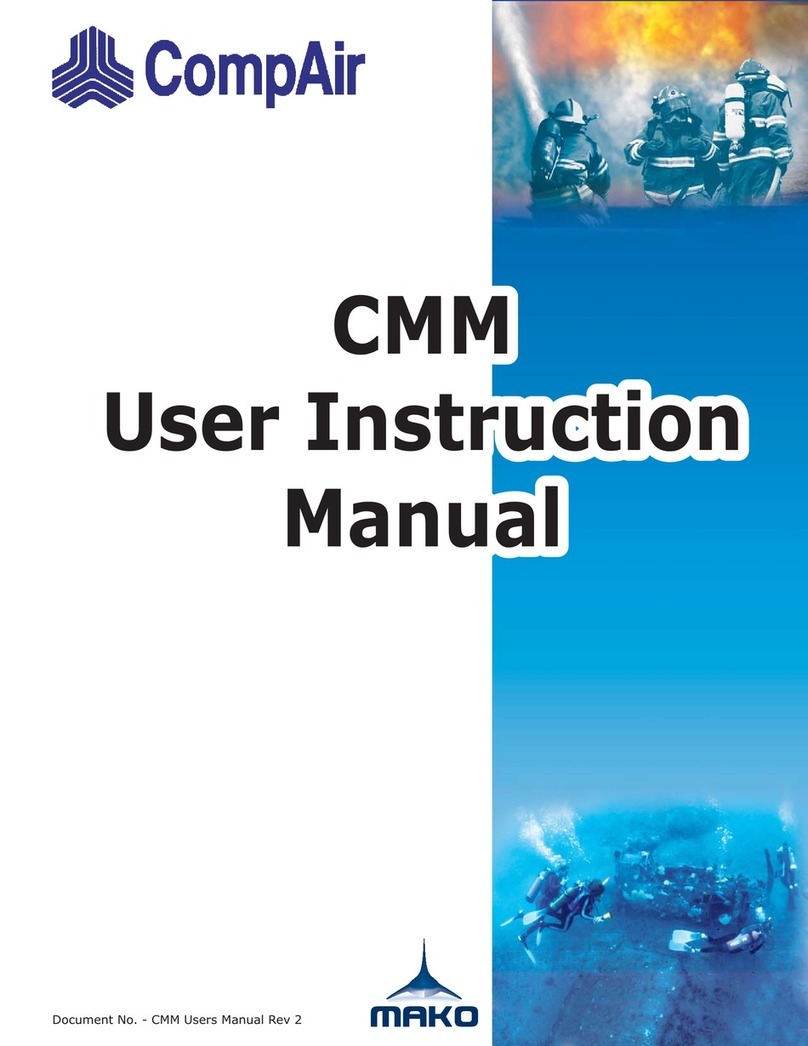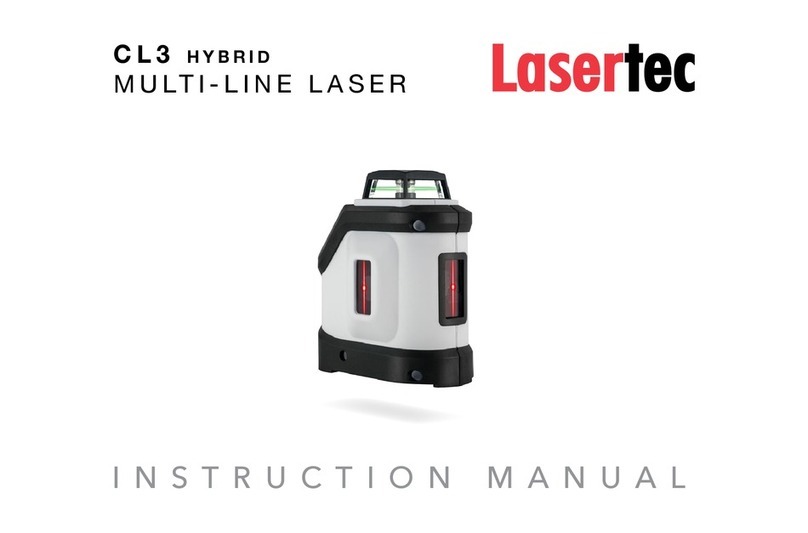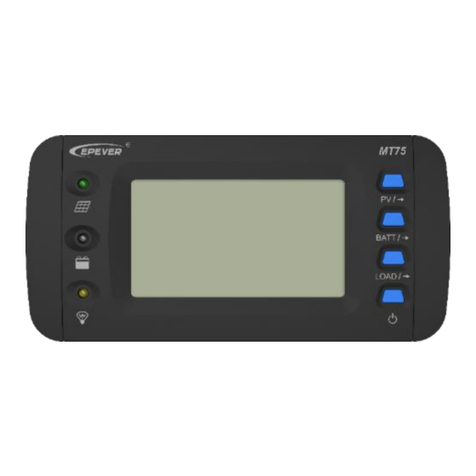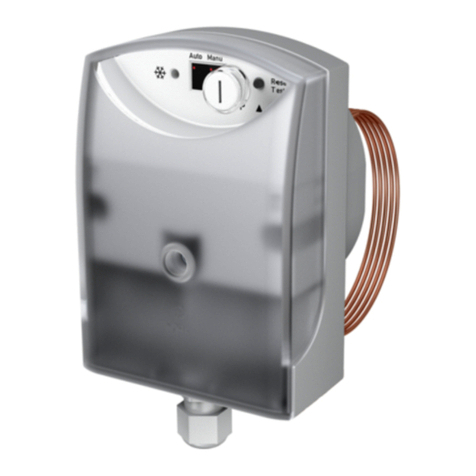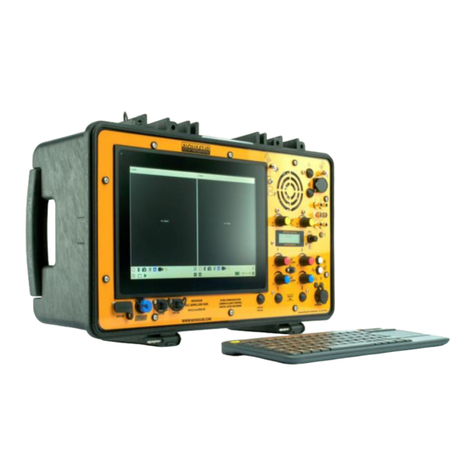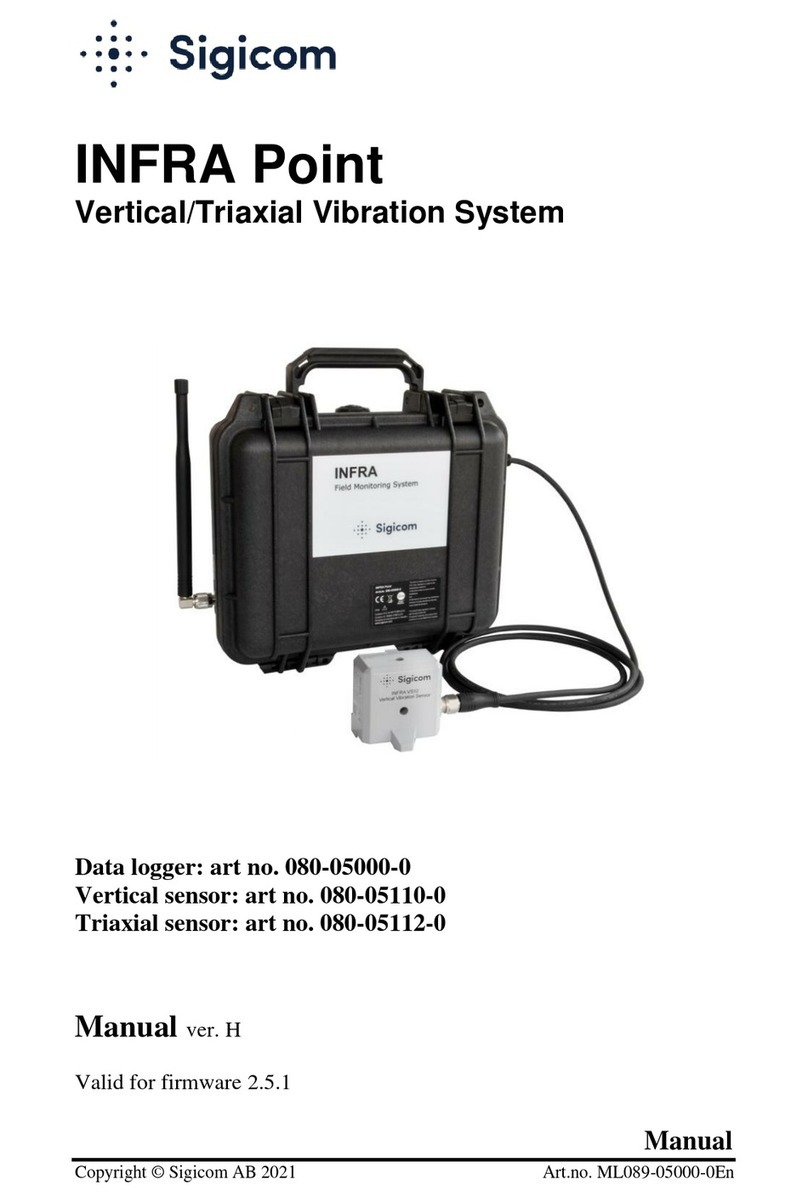
BARTINGTON INSTRUMENTS
Page 6 of 13 OM2442 iss 2
5. Installing the Mag613
5.1. Siting the Magnetometer
Note: In whatever situation the Mag613 is to be installed, it is important to avoid or
compensate for local magnetic effects. In general:
• The magnetometer should be sited several metres from any magnetic base rock to
avoid compromising measurements.
• Site the magnetometer several tens of metres from very large ferromagnetic objects
that could become magnetised and create fields that exceed the measuring range of
the sensor.
• Avoid siting the sensor near any ferromagnetic objects that may be subjected to the
effects of magnetic hysteresis, which would affect the sensor in an unpredictable
manner.
Note: For these reasons, a magnetic evaluation of any proposed installation site should be
conducted to establish that it is free from magnetic contaminants. It is recommended that
such an evaluation be carried out using total field or resonance magnetometers.
5.2. Cable Recommendations
To connect your Mag613 to a data acquisition unit, a mating connector will usually be required.
Refer to brochure DS1854 and the product label for wiring details.
Note: Cables are particularly prone to wear and damage if twisted, flexed beyond their
design limits, or subjected to excessive or repeated movement. It is recommended that all
cables are mounted securely in place. For further details refer to Section 5.4: Mounting
Recommendations.
5.3. Pre-installation Tests
Prior to the installation of the system, the magnetometer, the cable and your power supply must
be fully tested to ensure correct function as follows:
1. Check the interface cable for short circuits between the wires.
Note: The two ground wires (analogue and digital) are connected internally. Continuity
between these pins is normal and does not indicate a fault.
2. Check your power supply output voltage using a voltmeter. Refer to brochure DS1854 for the
expected values.












